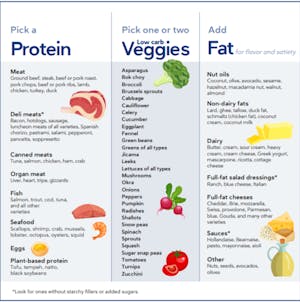Unleash Your Full Body Potential with Progressive Overload Workouts
Introduction
Embarking on a fitness journey is a thrilling endeavor, but it’s not without its challenges. Whether you’re a seasoned gym-goer or just starting out, the key to unlocking your full body potential lies in progressive overload workouts. In this article, we’ll delve into what progressive overload is, why it’s crucial for your fitness goals, and how you can implement it effectively to maximize your gains.
Understanding Progressive Overload
Progressive overload is the cornerstone of any successful fitness regimen. At its core, it involves gradually increasing the intensity, volume, or resistance of your workouts over time to continuously challenge your muscles and stimulate growth. By consistently pushing your limits and demanding more from your body, you force it to adapt and become stronger, fitter, and more resilient.
The Science Behind It
To understand why progressive overload works, we need to delve into the science of muscle hypertrophy. When you subject your muscles to stress through resistance training, tiny tears occur in the muscle fibers. In response to this damage, your body initiates a repair process, leading to muscle growth and increased strength. However, for this growth to occur, you must continually provide a stimulus that exceeds your body’s current capabilities – hence the need for progressive overload.
Implementing Progressive Overload
There are several ways to incorporate progressive overload into your workouts. One common method is to increase the weight you lift gradually. For example, if you’re squatting 100 pounds for three sets of 10 reps, aim to increase the weight by 5-10% once you can complete all sets and reps with proper form. Alternatively, you can increase the number of sets, reps, or training frequency to continually challenge your muscles.
Tracking Your Progress
Tracking your progress is essential when implementing progressive overload. Keep a detailed log of your workouts, including the exercises performed, sets, reps, and weights used. This will allow you to monitor your progress over time and make informed decisions about when and how to progress. Additionally, consider incorporating performance metrics such as strength gains, muscle measurements, and body composition changes to gauge your overall progress accurately.
Avoiding Plateaus
One common pitfall of any fitness regimen is hitting a plateau – a point at which your progress stalls despite your best efforts. To avoid plateaus and continue making gains, it’s crucial to vary your workouts regularly and challenge your muscles in new ways. This could involve changing up your exercises, rep ranges, or training modalities to keep your body guessing and prevent adaptation.
Listening to Your Body
While progressive overload is essential for stimulating muscle growth, it’s equally important to listen to your body and prioritize recovery. Overtraining can lead to injury, burnout, and diminished results, so be sure to incorporate adequate rest days into your routine and listen to your body’s cues. If you’re feeling excessively fatigued or experiencing persistent pain, don’t hesitate to scale back and give your body the rest it needs to recover and grow.
The Bottom Line
Progressive overload is a fundamental principle of effective strength training and muscle building. By gradually increasing the demands placed on your muscles over time, you can stimulate growth, improve strength, and achieve your fitness goals more efficiently. Remember to track your progress, vary your workouts, and listen to your body to ensure continued success on your fitness journey. So, are you ready to unleash your full body potential with progressive overload workouts? Read more about full body progressive overload workout




